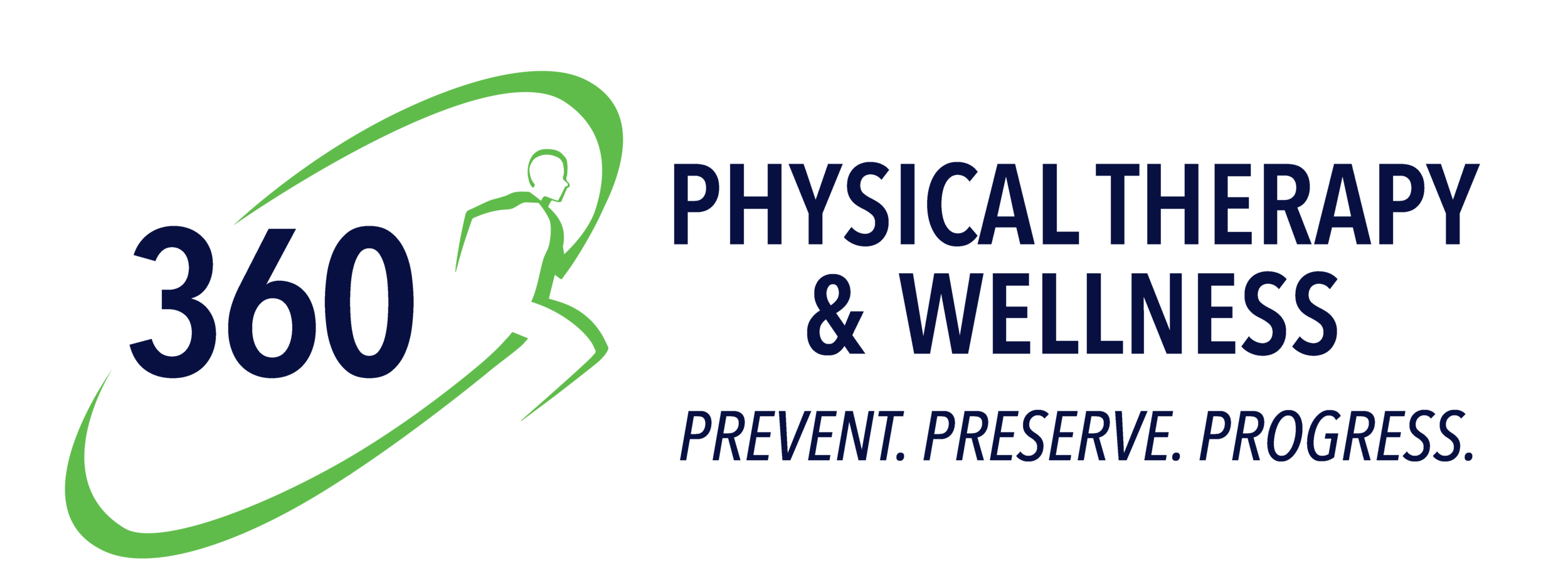SHOULDER PAIN
Shoulder pain is a widespread complaint, with millions of people in discomfort each day. It commonly develops with overuse and repetitive strain while engaging in sports, exercise, or heavy lifting. It can also occur due to poor posture, a car accident, a fall, or an underlying disease or condition.
Regardless of its cause, shoulder pain can be very frustrating to deal with and can be very limiting. Most shoulder injuries can be treated conservatively with physical therapy.
Physical therapy for shoulder pain is a safe and effective treatment. The physical therapists at 360 Physical Therapy & Wellness can help decrease your pain, increase your strength and mobility, and help improve your daily quality of life.
If you have pain or difficulty performing everyday tasks such as: reaching for something on a high shelf, rolling over on your shoulder at night, putting on a t-shirt, or reaching into your back pocket, or have been avoiding some of these activities due to pain, stiffness or weakness, make an appointment with our board certified orthopedics and sports clinical specialists today!
CAUSES AND TYPES OF SHOULDER PAIN
Shoulder pain, stiffness, and weakness can be caused by any number of things. From old sports injuries to poor posture and even certain underlying health-related illnesses, shoulder pain is common.
Shoulder pain can be acute or chronic, caused by a sudden injury or trauma, or from repetitive motion. The shoulder is the most mobile joint in your entire body, and it requires the coordination of many other joints, ligaments, and muscles to work alongside it to function properly.
Often left untreated, as many people think of this type of pain as something that is inevitable as you age, shoulder pain can quickly cause inflammation and immobilization, and can lead to costly and invasive surgery.
Our physical therapists commonly treat the following shoulder injuries:
Biceps tendonitis. The irritation or inflammation of the biceps. This injury can occur at either the shoulder or elbow and is usually the cause of constant repetitive movement, typically work or sports related.
Labral tears. “Labral” refers to the cartilage surrounding the shoulder joint. Labral tears are one of the most common shoulder injuries and can occur as a result of an accident, or due to constant repetitive movements. (Similar terms: SLAP tear; Posterior labrum tear)
Rotator cuff tears. Your shoulder is kept in its socket thanks to the rotator cuff, which is a set of four muscles that come together to protect your shoulder. When one or more of these muscles is torn, they detach and cause pain and immobility in your shoulder. An estimated 2 million people each year will visit a doctor for a rotator cuff tear. Physical therapy can effectively treat a torn rotator cuff.
Other shoulder conditions treated at 360 Physical Therapy & Wellness include:
Rheumatoid arthritis
SC joint sprains
Shoulder instability
Fractures and shoulder dislocations
AC joint sprains
Bursitis
Osteoarthritis
PHYSICAL THERAPY FOR SHOULDER PAIN
Specialized physical therapy services for rotator cuff, labral, or biceps tendon repair may be very effective before opting for surgery. While most conditions resulting in shoulder pain can be treated conservatively, sometimes surgical intervention is needed.
How we treat shoulder pain with physical therapy:
Dry needling. Certified professionals use hypodermic needles to deactivate trigger points in muscles, thereby decreasing pain, and improving function and performance. Trigger point dry needling is a safe technique used to address pain and limitation.
Instrument assisted soft tissue mobilization. Using a tool makes it easier to identify and treat fascial dysfunction. A specially designed stainless steel instrument is used to focus force through an area smaller than your finger with less friction. This allows for more precision in reducing inflammation and pain.
Joint mobilization. Assisted stretching techniques will help increase shoulder movement by working the joints, muscles, and tendons in and around the shoulder. These physical therapy techniques improve range of motion (ROM) and reduce pain.
Massage (myofascial release). Massage techniques such as myofascial release involve applying pressure to tight muscles to help alleviate pain and improve shoulder mobility.
Therapeutic exercise. We will help perform and educate you on the proper exercises you can do to improve your posture and release the stress placed on your joints and muscles to stop you from compensating for the pain.
sensitivity to light and noise.
blurred vision.
nausea.
reduced range of motion in the neck.
pain on one or both sides of the neck and/or face.
pain around the eyes.



